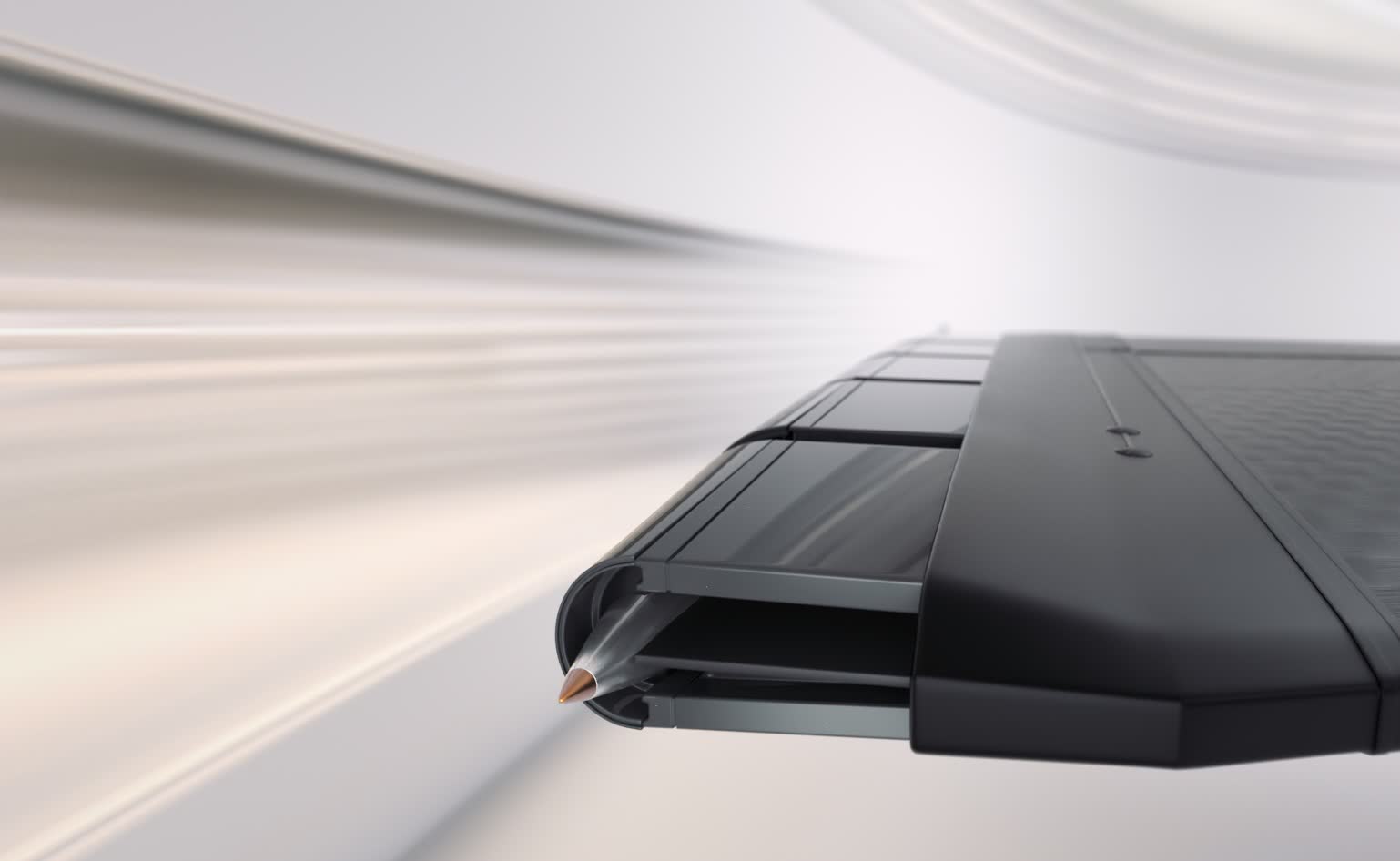Space startup wants to sling satellites into orbit with a huge centrifuge
In a nutshell: In the 21st century, there's a new space race, primarily between Tesla (SpaceX) and Amazon (Blue Origin). Both are concentrating on traditional methods of launching satellites into space—namely, big rockets. However, a pocket-sized infinite startup chosen SpinLaunch is developing a cheaper and environmentally cleaner way of launching satellites.
SpinLaunch is using a gigantic centrifuge to shoot stuff into infinite. By "stuff," we mean things that can withstand the G-strength created by being spun at v,000 miles per hour (over 10,000 Gs), which is a category of stuff that does not notwithstanding include satellites. Nevertheless, it did launch a missile-similar projectile tens of thousands of feet into the air last calendar month, using only twenty percent of the accelerator'due south power.
The design is relatively unproblematic. A carbon fiber tether holds the projectile within a span vacuum bedchamber every bit it spins up to speed. Once the centrifuge has reached the desired velocity, the launch vehicle is released out a tube taller than the Statue of Liberty (fifty.four meters). It is non unlike launching your friends off the merry-go-circular when you were a kid. A more mature and controlled application of the principle would be the hammer throw event in the Olympics.

New Atlas notes that the accelerator is electric and could cut the corporeality of fuel needed to launch satellites. SpinLaunch estimates that its centrifuge uses four times less fuel than traditional rockets and has zero emissions. It is too ten times cheaper per launch because it tin can send up multiple payloads in a day.
The company has two versions of the accelerator. The suborbital (masthead), which it successfully tested on October 22, stands upright in the middle of a New United mexican states desert so that test vehicles do not stray too far and do not crush anything when they come up downwards. The suborbital launcher is for testing purposes only.
The orbital launcher is what the company is aiming at but has not built the facility yet (beneath). It says it is looking to construct it in an undisclosed coastal region. SpinLaunch is currently seeking approval from the FAA. Once things are in society, the startup will build the accelerator on the side of a hill to get the proper angle for orbital flight. It will be larger than the test unit of measurement to obtain college velocity but will operate nether the same principle.

Right now, current satellites would not survive a spin-launch. However, the visitor says that advances in electronics have produced capacitors, chips, and resistors that can withstand the tremendous G-forces generated past the centrifuge. Testing of satellite components has proven vehicles could be ruggedized to withstand a launch.
With terminal calendar month's exam flight under its belt, SpinLaunch is planning several more than trials throughout 2022. The startup wants to study the functioning of several vehicle types at various velocities and hopes to start commercial flights in late 2024.
Information technology'due south worth noting that this method is not viable for launching manned vessels into space. The human body tin merely withstand a maximum of 9 Gs and only for a few seconds. Astronauts would be expressionless long before the centrifuge even reached its maximum speed.
Source: https://www.techspot.com/news/92194-space-startup-wants-sling-satellites-orbit-huge-centrifuge.html
Posted by: sieverswoudde89.blogspot.com


0 Response to "Space startup wants to sling satellites into orbit with a huge centrifuge"
Post a Comment